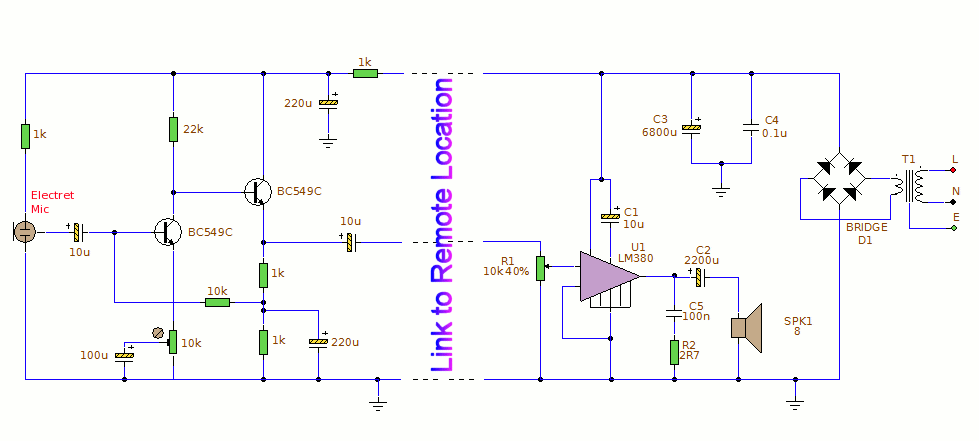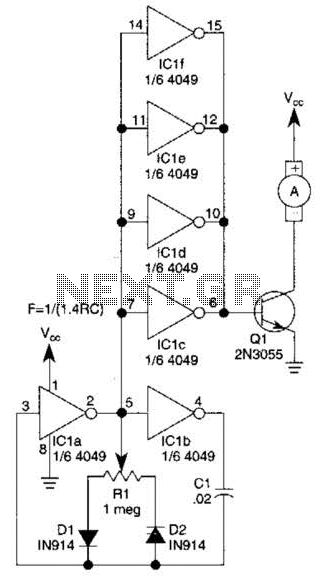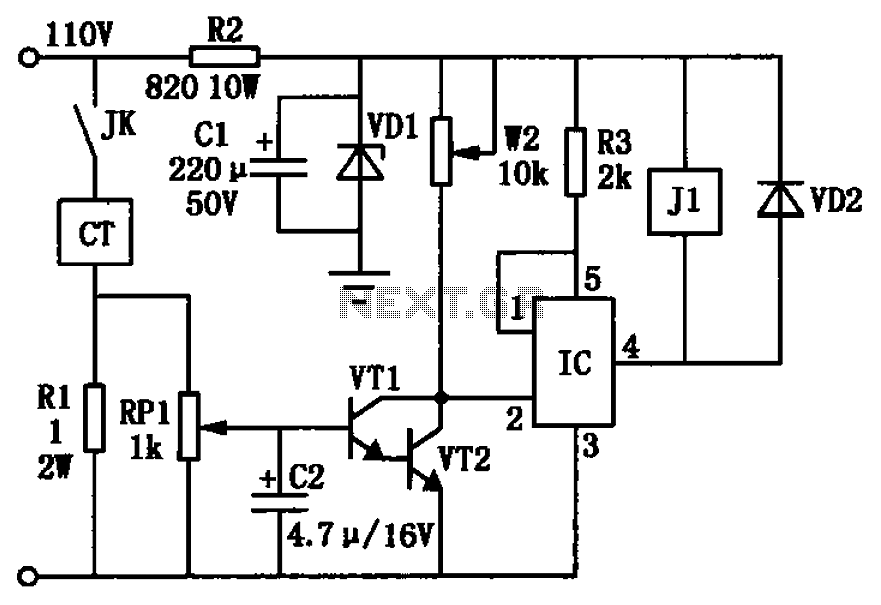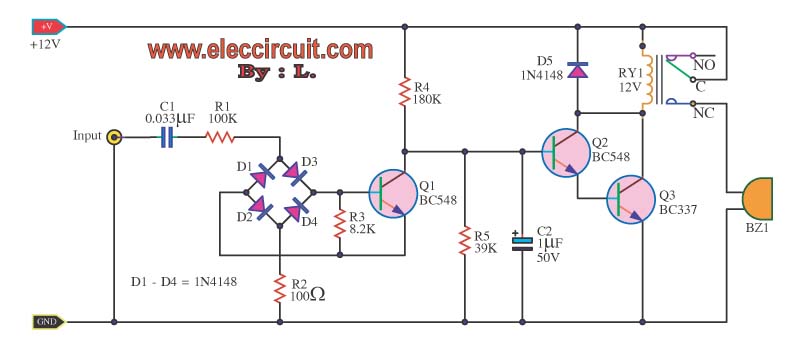
Monostable Multivibrator Ii Circuit

The time constant of RAXC determines the period of the monostable multivibrator. A negative pulse at pin 2 of the 555 starts the cycle.
The monostable multivibrator is a circuit configuration that produces a single output pulse in response to an input trigger. In this specific design, the time constant is primarily influenced by the resistor RAXC and the capacitor connected to it. The time constant, denoted as τ (tau), is calculated using the formula τ = RAXC × C, where RAXC represents the resistance in ohms and C denotes the capacitance in farads. This time constant dictates the duration of the output pulse generated by the multivibrator.
When a negative pulse is applied to pin 2 of the 555 timer integrated circuit, it triggers the monostable operation. The 555 timer is designed to recognize this negative transition as the start of a timing cycle. Upon receiving this trigger, the output at pin 3 goes high for a duration determined by the aforementioned time constant. After the elapsed time, the output returns to its low state, completing the cycle.
In practical applications, the selection of RAXC and the capacitor value is critical for achieving the desired pulse width. Adjusting these components allows for fine-tuning the timing characteristics of the circuit, making it suitable for various applications such as timers, pulse width modulation, and one-shot pulse generation. Proper design considerations must also include the power supply voltage, the load connected to the output, and the characteristics of the components used to ensure reliable operation of the monostable multivibrator. The time constant of RAXC determines the period of the monostable multivibrator. A negative pulse at pin 2 of the 555 starts the cycle.
The monostable multivibrator is a circuit configuration that produces a single output pulse in response to an input trigger. In this specific design, the time constant is primarily influenced by the resistor RAXC and the capacitor connected to it. The time constant, denoted as τ (tau), is calculated using the formula τ = RAXC × C, where RAXC represents the resistance in ohms and C denotes the capacitance in farads. This time constant dictates the duration of the output pulse generated by the multivibrator.
When a negative pulse is applied to pin 2 of the 555 timer integrated circuit, it triggers the monostable operation. The 555 timer is designed to recognize this negative transition as the start of a timing cycle. Upon receiving this trigger, the output at pin 3 goes high for a duration determined by the aforementioned time constant. After the elapsed time, the output returns to its low state, completing the cycle.
In practical applications, the selection of RAXC and the capacitor value is critical for achieving the desired pulse width. Adjusting these components allows for fine-tuning the timing characteristics of the circuit, making it suitable for various applications such as timers, pulse width modulation, and one-shot pulse generation. Proper design considerations must also include the power supply voltage, the load connected to the output, and the characteristics of the components used to ensure reliable operation of the monostable multivibrator. The time constant of RAXC determines the period of the monostable multivibrator. A negative pulse at pin 2 of the 555 starts the cycle.





